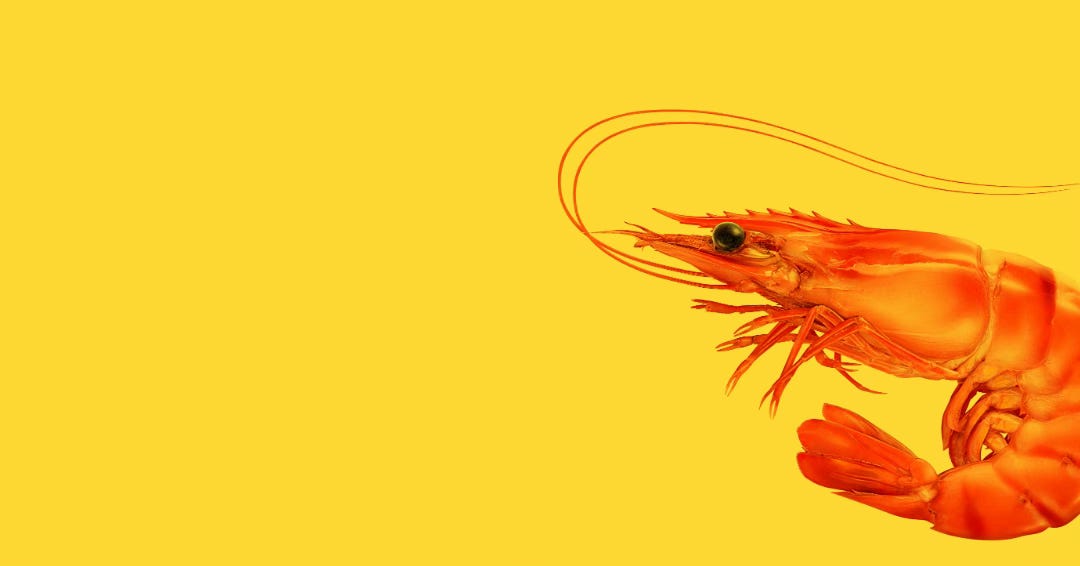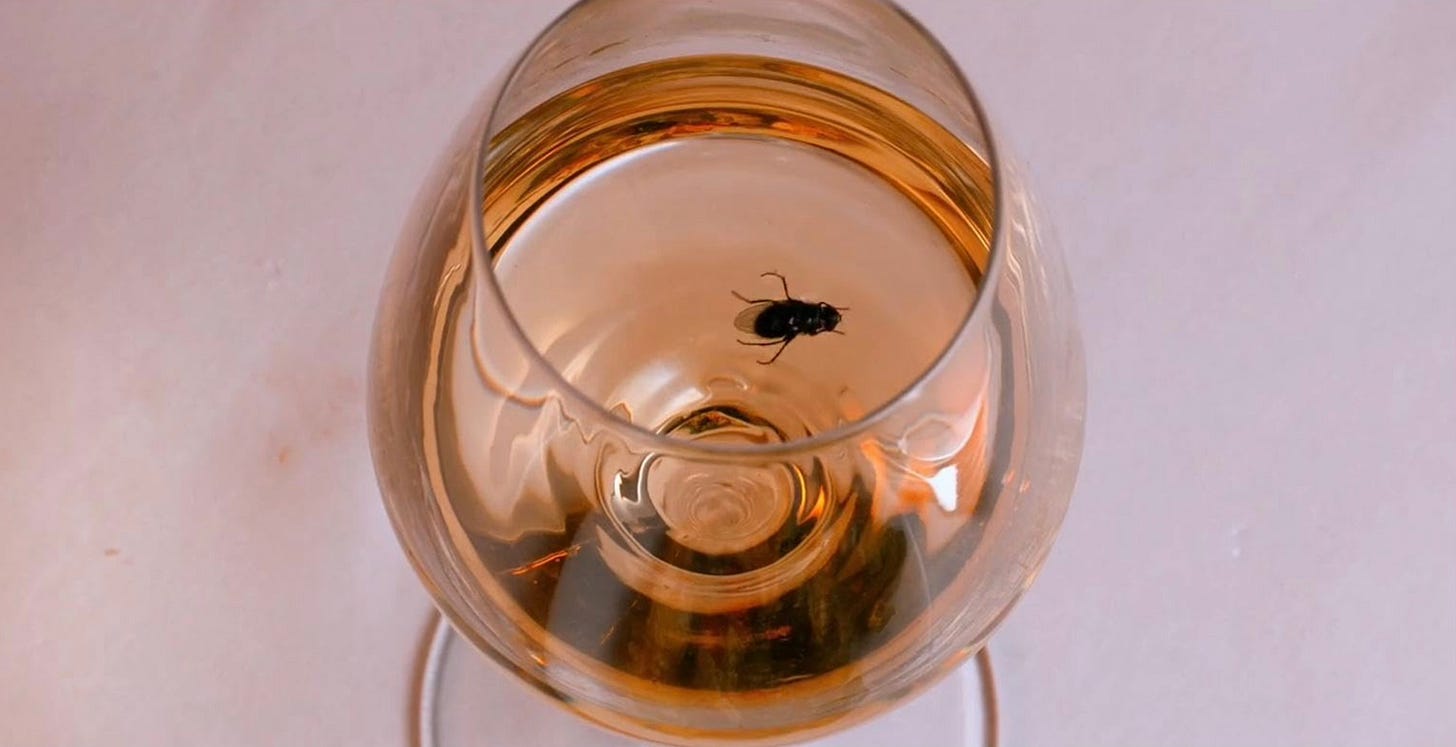“The Substance" Failed Speciesism
A powerfully feminist film and overlooked animal exploitation
When I watched The Substance, a 2024 film starring Demi Moore, with my feminist glasses, I really liked it. So much so that I gave the film 5 stars on Mubi. However, as a vegan zoologist who works on animal consciousness, when I put on my ecofeminist glasses and re-evaluated the film, The Substance failed speciesism. The purpose of this article is to talk about the context that should have been established between women and animals (but was not established in the film), which the director/writer unknowingly skipped while making the film and unfortunately touched on society when it could have delivered a much stronger slap, and the disappointment it caused me.
I may have been out of breath while trying to follow the film, which focuses on the blind hole that a society that does not allow us to grow old pushes us into (or imprisons ourselves in), with my mind wide open. In fact, Beliz Güçbilmez's Magnetic Field Method was also in the back of my mind, and I found a seed for myself: the disruption of the balance. At the end of the movie, I felt the need to quickly go up the stairs of the Kadıköy Cinema and breathe in the fresh air. My first impression, as I said at the beginning, was that it was a very good movie. During the movie, I thought the director might even be vegan. There were so many images and dialogues where we could establish the context of objectification between women and animals that it was practically shoved in front of us. When I watched a movie that made so many references to animal exploitation, I felt the need to take notes because I would probably want to write about it when it was over.
My notes:
The film begins with an EGG being injected with a substance.
A man drops a HAMBURGER on ‘star’ Elizabeth Spark.
The boss, in the scene where he is consuming SHRIMP, tells Elizabeth, “It ends at 50” and turns his head to look under the waiter’s skirt. The FLY that falls into the wine is dying and becomes immobile and dies towards the end of the scene.
There are INSECTICIDE advertisements on the walls where Elizabeth goes to get the substance. It says “Extermination”.
Elizabeth is eating an OMELET and drinking a mocha LATTE.
A shot from inside the refrigerator shows a CHICKEN BODY that has been cooked with its legs tied.
Sue is pulling a CHICKEN LEG out of her belly button.
Elizabeth has consumed too much CHICKEN, when Sue wakes up she sees the CHICKEN BONES that have been consumed and left in the middle.
The boss gives Elizabeth a cookbook as a gift for her 50th birthday. As Elizabeth turns the pages of the book, all the dishes we see have animal names.
While Sue is being interviewed on TV, Elizabeth makes disproportionately more recipes than in the cookbook out of anger. At the same time, Sue mentions in the interview that the place she was born and raised in is too small to be a city or even a village, and perhaps says ‘A FARM’.
Elizabeth, who is angry while watching the interview, is squeezing the CHICKEN MEAT with her hand. As she gets angrier, she stuffs something into the chicken’s butt and in the next image, we see Sue’s butt from the same angle as the chicken.
As I said at the beginning, I left the film with strong feelings. I thought the director/writer had established a very good context, and that the invisible animal exploitation was brought to a visible level thanks to the more visible exploitation of women. That is, until I saw posts on the film’s Instagram profile that I couldn’t make sense of. The post with the caption HAPPY THANKSGIVING over the photo of Elizabeth squeezing the chicken meat made me suspicious about the message the director wanted to convey. Could she have simply opened up only the issue of women for discussion? Could she have recklessly used animal bodies to create a powerful body horror? Could she not have seen the strong connection between the two exploitations and never heard of “ecofeminism”?
I read the director’s interviews to understand the message more clearly. I persistently searched for a sentence the director/writer said about animal awareness; The New York Times, The Observer, Daily Beast, GQ, Vogue, ELLE, etc. Unfortunately, I couldn’t find any of her sentences or references. In fact, in Collider Interviews, Demi Moore said, “I don’t know how many shrimp he ate while filming that scene,” while talking about the scene where Dennis eats shrimp, and the director laughed and said, “He must have eaten 2 kilos.”
This sentence was the answer to the question I was looking for. I realized that Coralie Fargeat, who is both the director and writer of the movie The Substance, missed the big picture and was not aware that we women are on the same side as animals when it comes to patriarchal exploitation. In an interview for her previous movie Revenge, Fargeat confessed; she said that she was not aware of the feminism issues seen in the movie and voiced by the audience at the time, and that she later made the necessary intellectual readings and focused on social imbalances. So, this time, the director ignores speciesism.
When I re-evaluate the movie from this perspective, I think that meat is being pornified. We witness intense exploitation of women and animals. There is a salvation for the women at the end of the movie: I interpret turning into a monster as a salvation for Elizabeth/Sue. However, there is no way out for the animals. They are constantly consumed. Carol J. Adams talks about how gender construction is related to how we view and treat animals (especially the animals we consume) in The Sexual Politics of Meat. The patriarchal system, which decides when and how many women will give birth and whether or not they will have abortions, has also taken over the reproductive systems of the animals it has domesticated through the animal industry.
When talking about Sue, the boss says, ‘I shaped her for success’, just like the industry does to animals. The chicken body we see in many scenes in the movie has been shaped for economic success in real life and has been transformed into two bodies, as in the movie: some chicken bodies are produced for eggs, while others are produced for meat.
In the scene where the media mogul puts the shrimp in his mouth and we watch with loud mouth smacking, he tells Elizabeth, ‘At 50, it stops’. He has consumed the woman in front of him for his own TV channel, or at least that’s how he made her feel. The camera angle moves from the portrait of Elizabeth, who is on the verge of anxiety, to the fly that has fallen into the wine glass. The dying fly dies shortly after.
Shrimps that are rapidly multiplied and raised in aquaculture, cows whose meat we eat (steak), whose skin we wear (textile), whose hooves we drink (collagen), mother sheep/goats/cows whose milk we steal to add to our mocha latte and who are separated from their offspring, chickens that we use to make omelets, which used to give 20 eggs a year but now give 1 egg every 24 hours… Yes, we are alone with astronomical numbers in a huge wheel of animal exploitation. So much so that it is impossible not to see or ignore. But somehow we are blind to the hell we make animals live.
I wrote the last sentence by testing it. As follows; I asked my female friends about the effect the film had on them. I especially asked this question to vegans and those who have been subjected to violence. Everyone found the film very powerful in terms of feminism and liked it, but no one mentioned animals. I am giving a quote from The Sexual Politics of Meat so that the reason for this can be better understood;
“The process of seeing the other as consumable, as a ‘thing’, is often unnoticed. It emerges invisibly; because it coincides with the dominant culture’s view. One reason why the process is invisible to us is that the final product (i.e. the object of consumption) is available everywhere.”
The fact that everyone consumes it does not mean that shrimp is consumable. We must remember that these animals, which have consciousness, feel pain and pleasure, also have the right to exist *and we must control ourselves*. We must realize* that we have no other choice than this body and this world and respect the balance*. The framework of feminism is not narrow enough to protect only women and fight against sexism, moreover, women must be aware that there is no salvation alone. As Baudelaire said in his poem, we must also recognize speciesism and transform society ‘in order not to miss the hells that fill the world’. While exploitation stands before us in an intricate structure, we cannot make the victims line up in search of rights. We must transform our films, our tables and our lives for an all-out struggle.










These connections need to be made, thanks for talking about this! I must admit I haven't seen The Substance - I really want to, I'm so passionate about its main topic, but I don't do well with blood and gore and disgusting stuff. I really hate it. So I'm not sure it's one for me. But this perspective is so important and not often discussed at all. The Sexual Politics of Meat is one of my favourite books on animal rights.
What a great perspective—definitely thought-provoking. Thank you for pointing out these connections. I also believe the director intentionally used animals to portray the abuse, and, like you said, it would be amazing to see a deeper commentary on this.
This feels like a step in the right direction, and the more we discuss it, the closer we get to making it a reality. So, thank you for sharing your thoughts and starting this conversation!